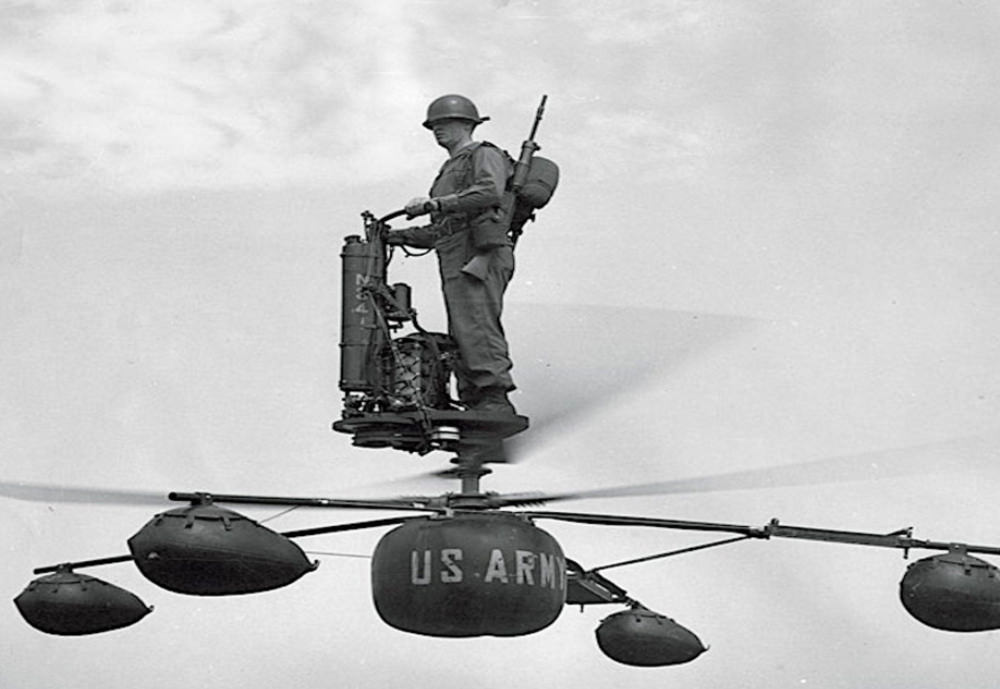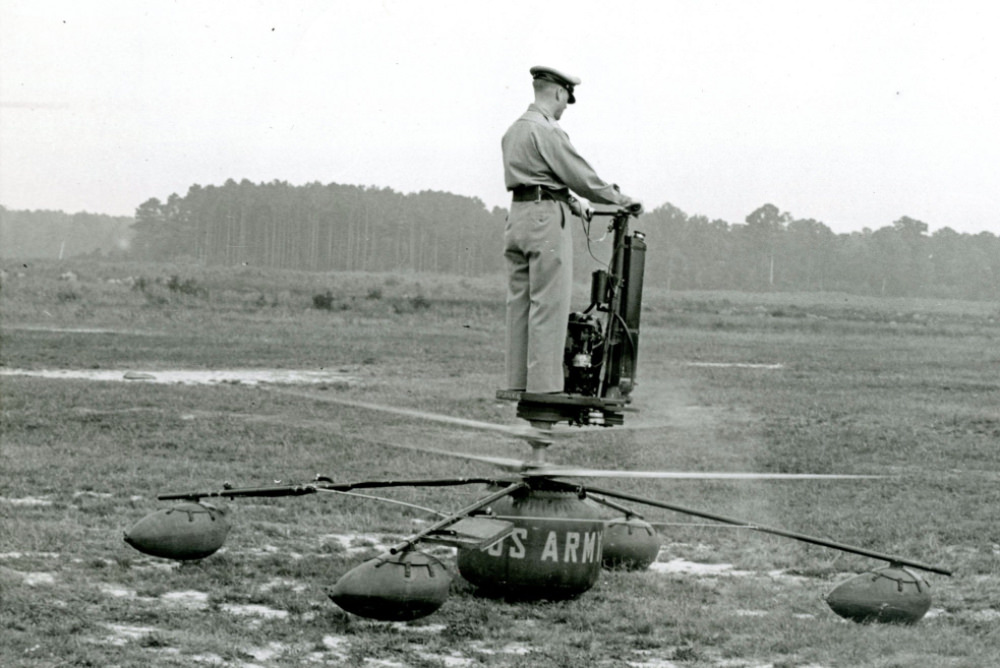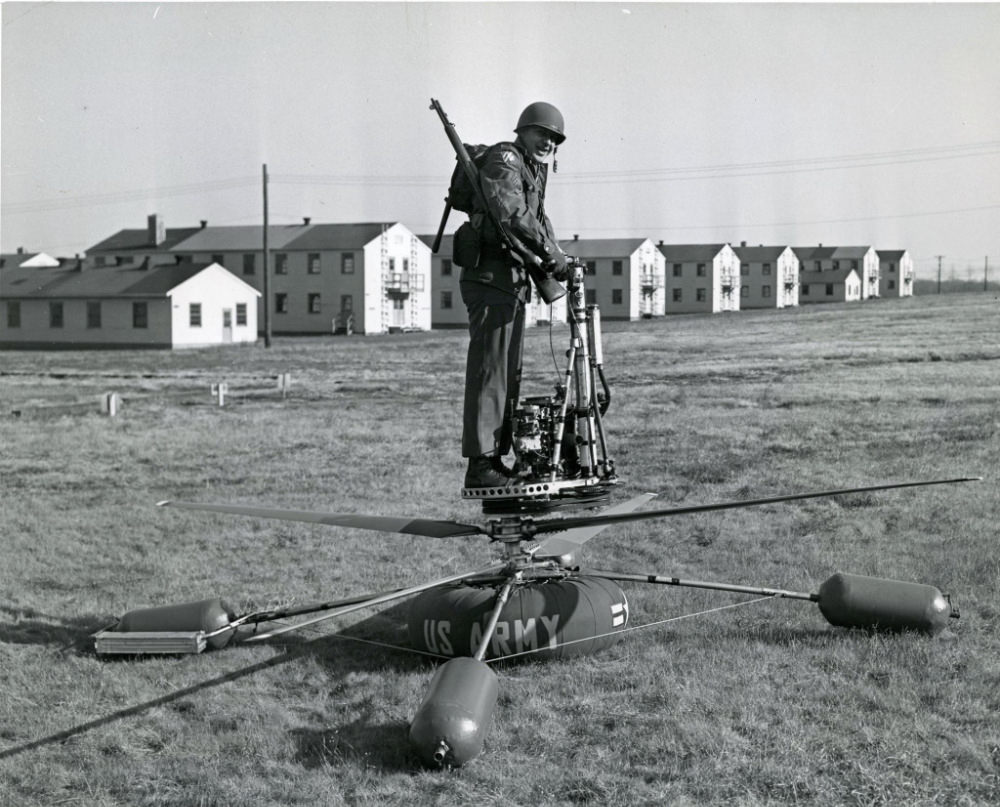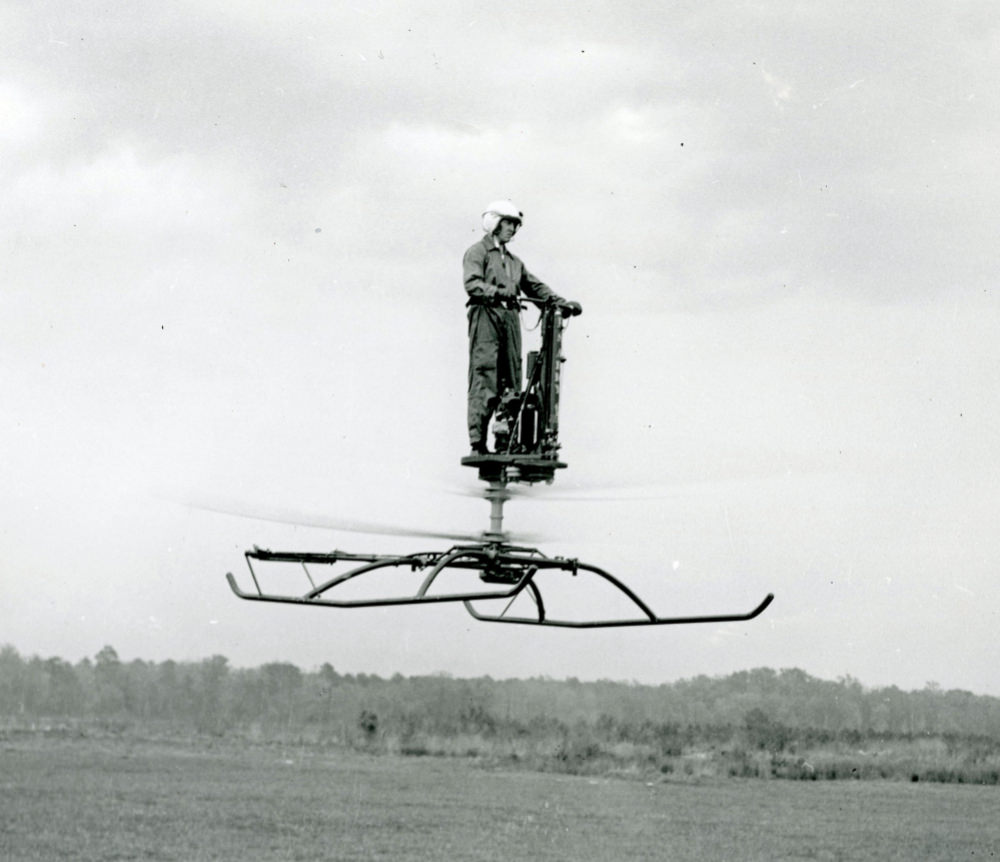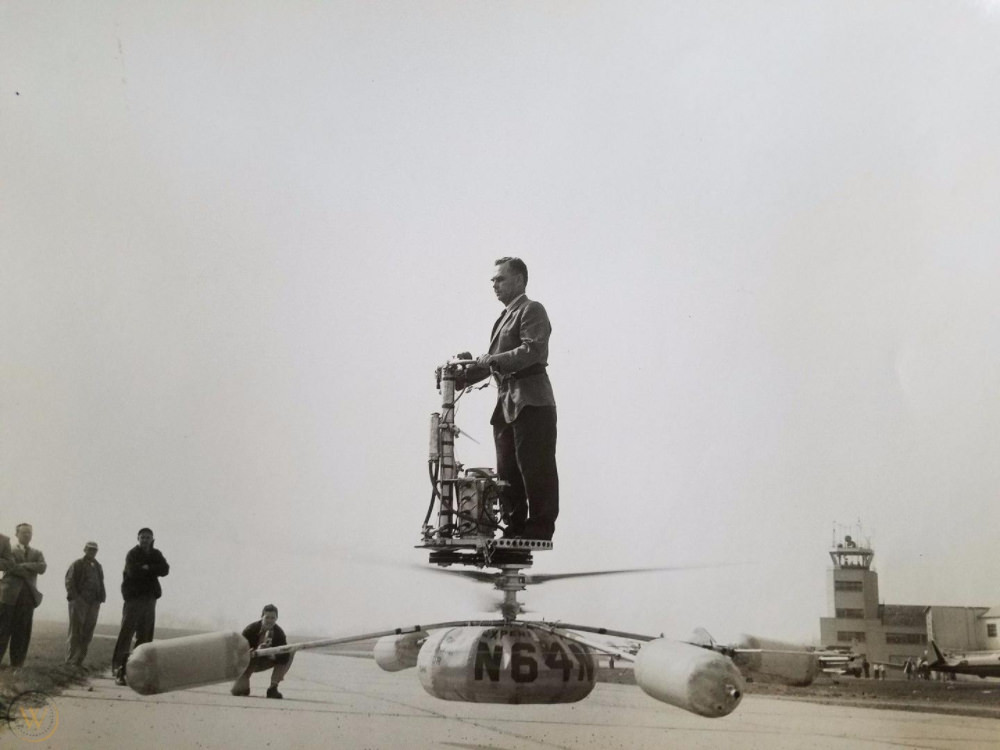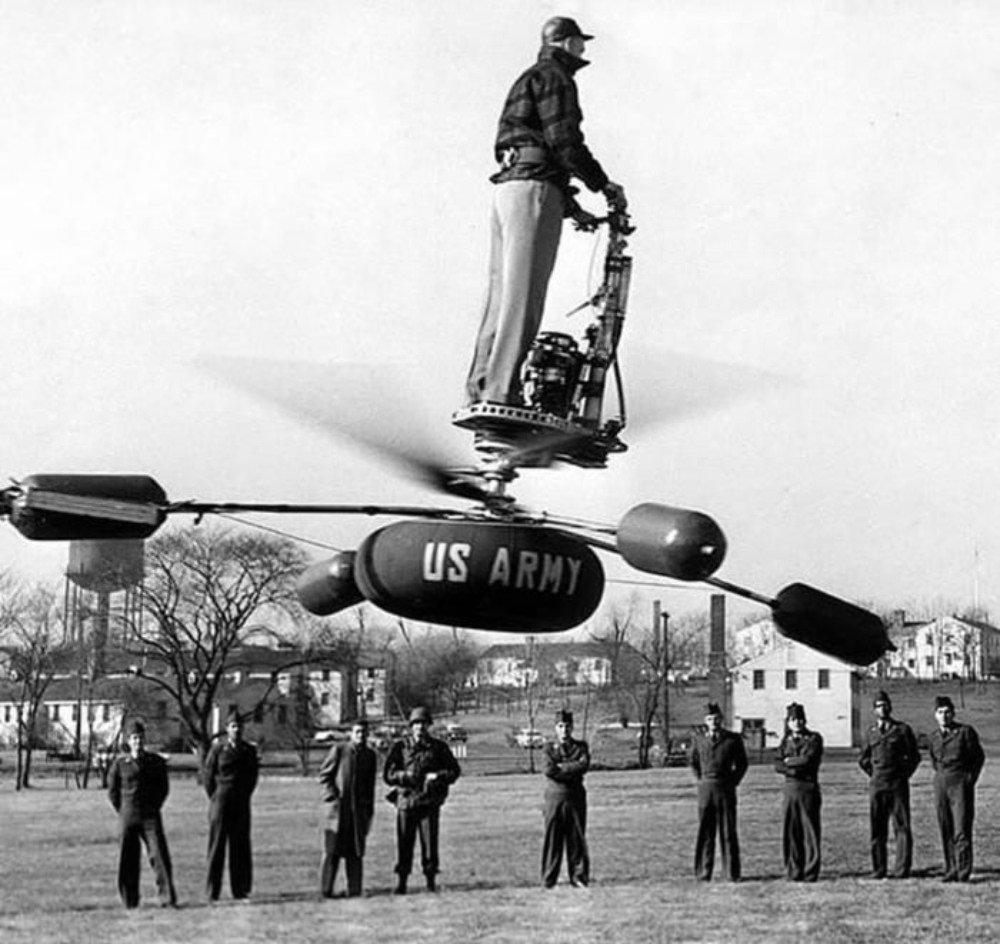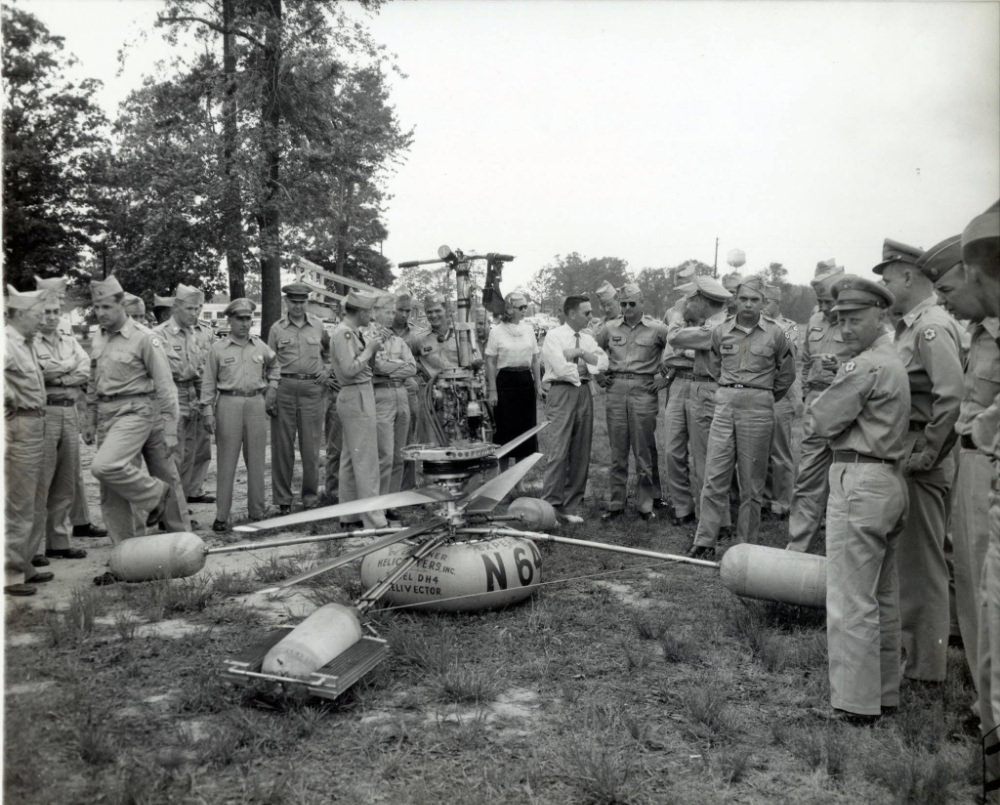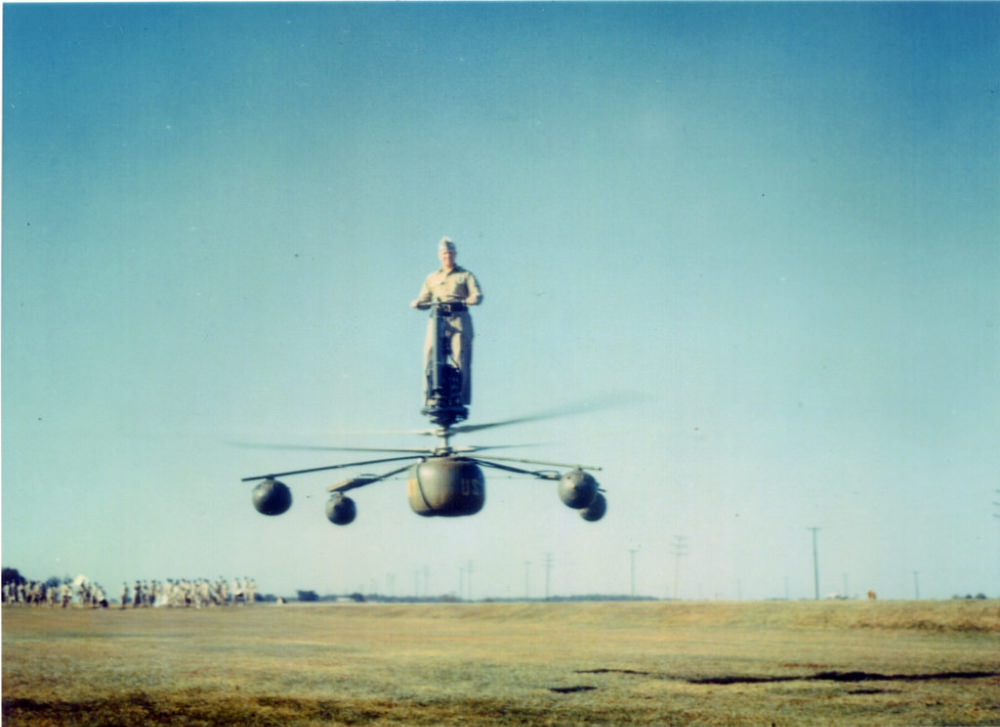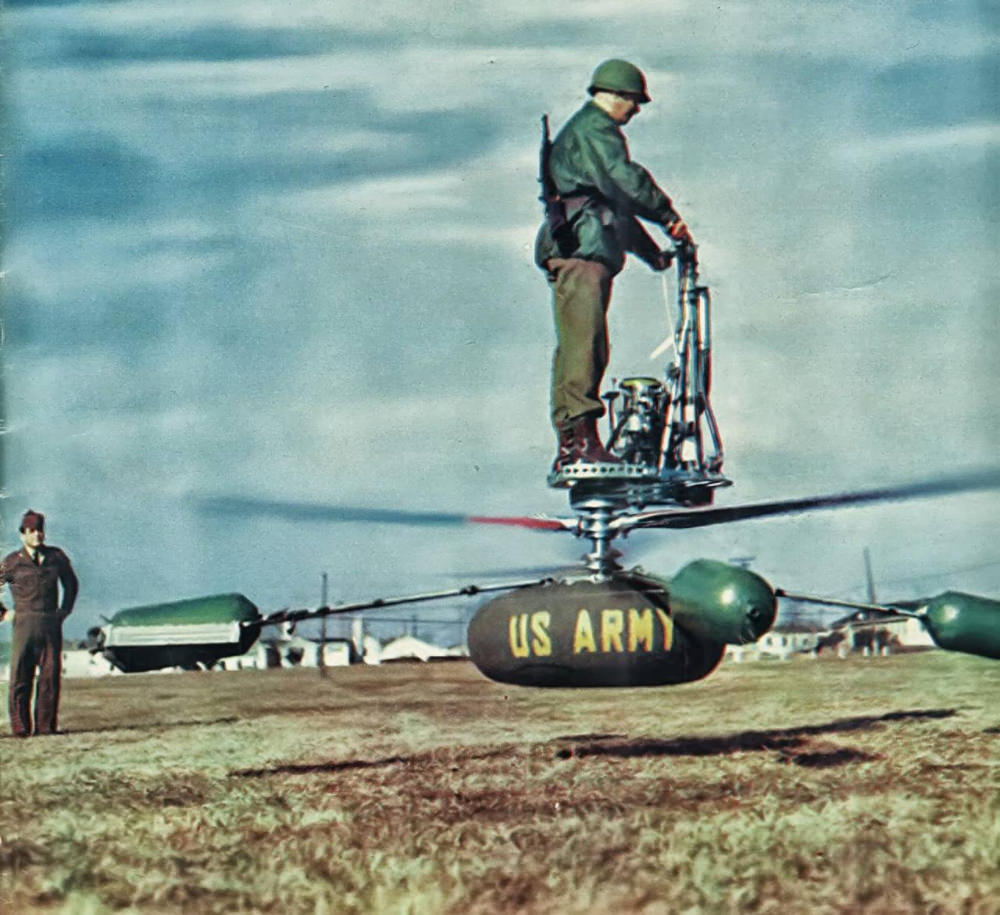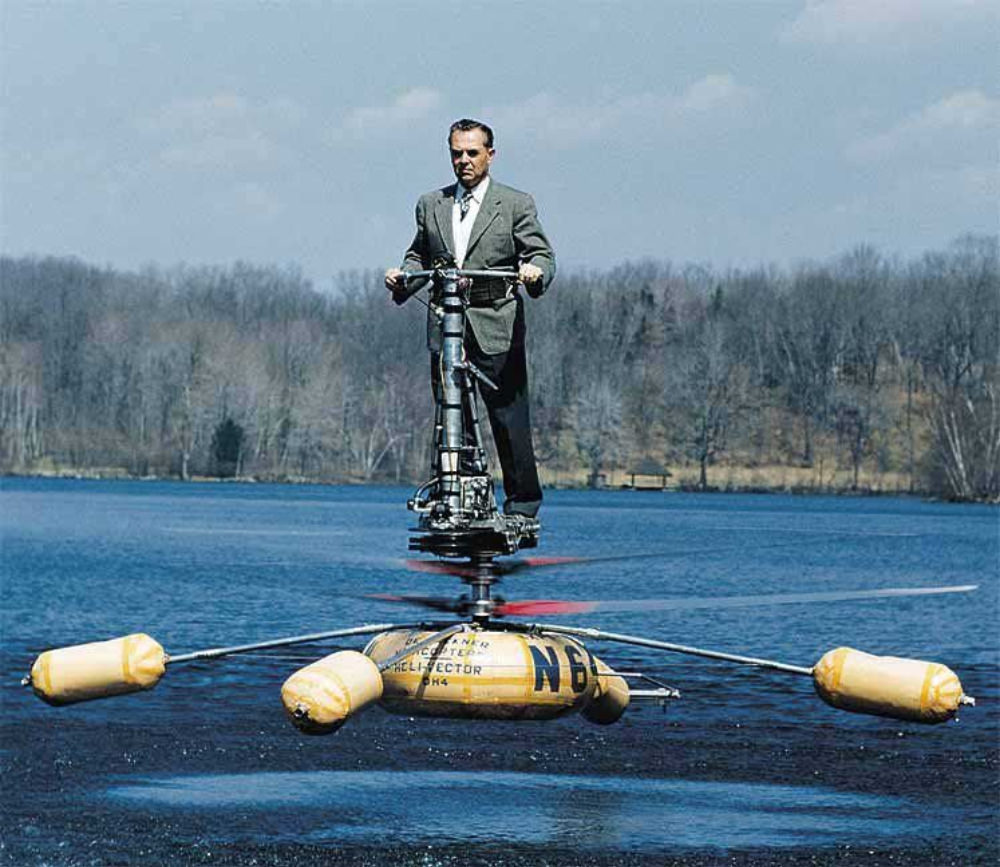HZ-1 Aerocycles, also known as YHO-2s, were personal helicopters created by the Lackner Helicopter Company, Mount Vernon, New York, in the mid-1950s.
Originally designated YHO-2 by the US Army, the prototype was re-designated HZ-1 and renamed ‘Aerocycle’ in 1955 and made its first free flight at Brooklyn Army Terminal in January 1955. The early test flight program consisted of 160 flights totaling more than 15 hours of flight time, and the results were considered promising enough to order a dozen examples of the aircraft. The craft was predicted to provide transportation to a modern version of the old cavalry, effectively providing airborne “eyes and ears” for the Army.
After 1956, the test program was moved to Fort Eustis, Virginia, where Captain Selmer Sundby assumed the test-flying duties. Initial testing indicated that untrained soldiers could operate the HZ-1 in less than 20 minutes, and some claimed that only five minutes of instruction was needed. Additionally, the HZ-1 proved to be faster than other flying platform designs evaluated by the Army. The test also determined that the craft was much more challenging to fly than had been expected and would not be safe in the hands of an inexperienced pilot. Additionally, the low-mounted rotors were prone to picking up small rocks and other debris.
During tethered and free-flight tests lasting up to 43 minutes, the HZ-1 experienced a pair of accidents. The contra-rotating rotors intermeshed and collided in both crashes, shattering the blades and causing an immediate loss of control. The Langley Research Center conducted aerodynamic tests on the Aerocycle in a full-scale wind tunnel and found that an uncontrollable pitching motion limited its forward speed, but the rotor-tip clearance was always sufficient. The inability to determine the precise cause of the intermeshing and the fact that the personal lifting device concept did not meet expectations led to the termination of the project. After receiving the Distinguished Flying Cross for his test-flight work on the HZ-1, Sundby went on to test-fly the H-21 and H-34 helicopters and saw combat in the Vietnam War before retiring as a colonel.


